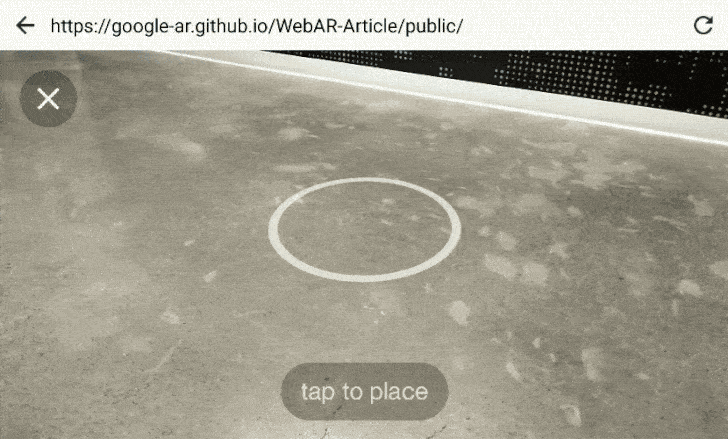VR and AR might have finally started falling off the marketing buzzword lists, but Google is still pressing forward with new experiments for each. The company's latest prototype brings the magic of augmented reality to your phone by an entirely new route: Chrome. It seems that Google envisions a future where AR can be a universal part of the web.
Google appears to be calling the new system "Article," and right now it's pretty much just a 3D model viewer with camera integration. It's reasonably refined, as you're able to walk around an object to see it from more perspectives while it stays in position, but it doesn't appear to have much in the way of interaction or animation yet. The interface also looks to be intuitive and fluid.
Article on an AR-compatible tablet.
So far, the current prototype Google is showing off seems to look a bit like the AR stickers for the Pixel phones—if a bit more rough around the edges. Of course, this is all operating from inside a browser, not a dedicated app, which is a significant distinction.
We've known that Google has been interested in adding VR and AR capabilities to Chrome for some time. Back in May at I/O, the company refreshed it's commitment to bringing Chrome VR to Daydream. VR support was added as of Chrome v56 with a bunch of demos appearing over the summer, and in August it released tech for web developers to take advantage of the ARCore and ARKit in a browser. This new demo might still be a prototype, but it's also a culmination of the company's long-term efforts to bring VR and AR to the web, demonstrating how simple and ubiquitous the technology could become.
For the full details, you can check out Google's blog post. It's quite a good read, and it even gives a brief survey of the technical aspects behind it, if you're interested.
Source: Google

